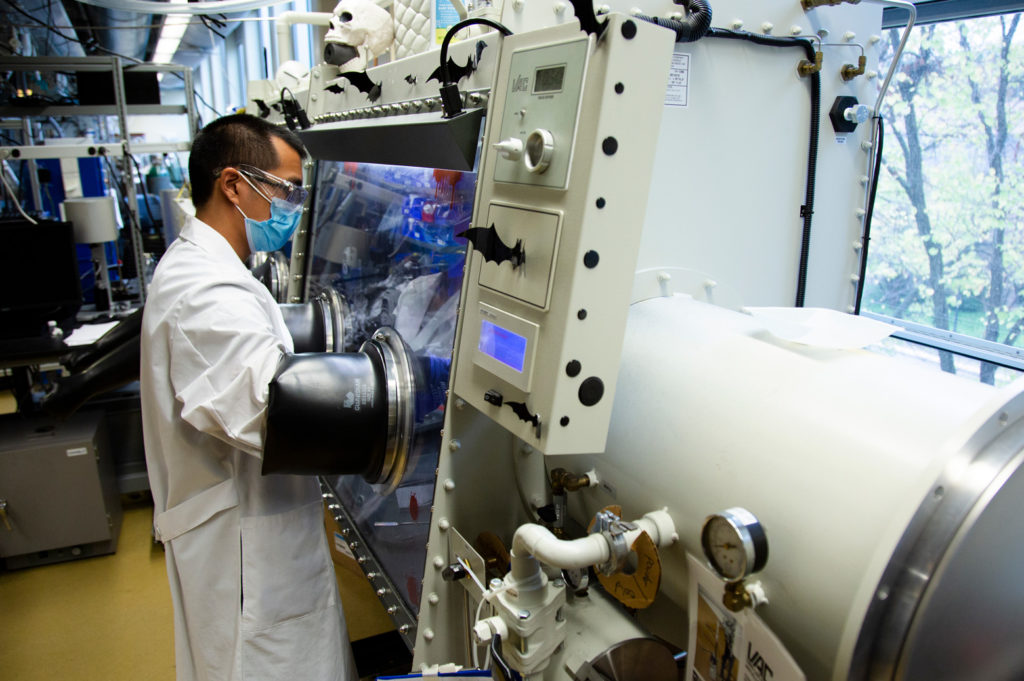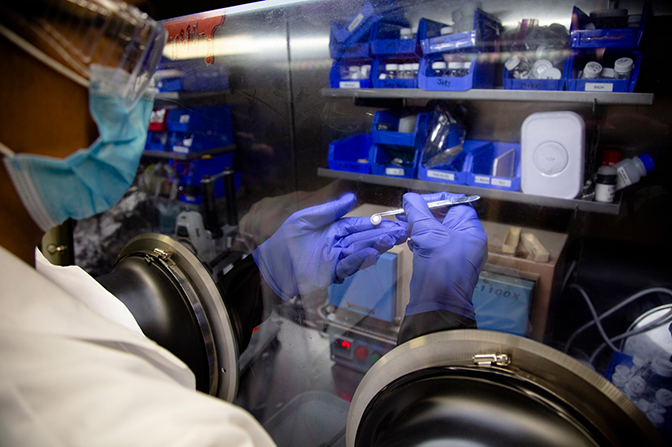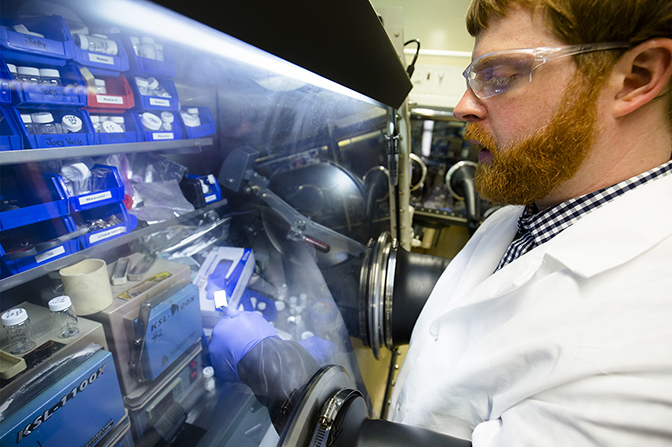MICHIGAN ENGINEERING — A new $10.95 million research center, led by Michigan Engineering and funded by the U.S. Department of Energy, could help enable the development of advanced batteries and fuel cells for electric vehicles.
It focuses on understanding an emerging branch of science involving mechanical and chemical phenomena that affect advanced battery designs.
U-M and eight partner institutions will explore the use of ceramic ion conductors as replacements for the traditional liquid or polymer electrolytes in common lithium-ion batteries for electric vehicles and in flow cells for storing renewable energy in the grid.

“The recent discovery of ceramic ion conductors that simultaneously exhibit unprecedented performance and stability has the potential to change the electrochemical energy storage technology landscape,” said Jeff Sakamoto, professor of mechanical engineering at U-M and director of the new center.
Ceramic ion conductors could help advanced batteries pack more power than lithium ion batteries of the same size. However, when these new conductors are in contact with other components, researchers have noticed some new and unusual behaviors arising from that blend of mechanical, electrical and chemical interactions.
“Our new center seeks to bridge fundamental knowledge gaps related to mechano-chemistry with a diverse group of researchers who come from disparate fields of study,” said Sakamoto.
The four-year grant establishes a DOE Energy Frontier Research Center (EFRC) at U-M, the Mechano-chemical Understanding of Solid Ion Conductors (MUSIC). Established in 2009, the EFRC program is designed to “tackle the toughest scientific challenges preventing advances in energy technologies.”

Ceramic ion conductors represent one of those advances, and MUSIC is charged with performing the basic science needed to explore their potential impact on a variety of technologies. Those include long-duration energy storage and hydrogen fuel cells.
“We have decades of fundamental research into ion conduction in ceramics to work with, and we’re applying that knowledge towards emerging applications such as batteries and fuel cells,” said Neil Dasgupta, MUSIC’s deputy director and an associate professor of mechanical engineering at U-M.
“However, critical barriers remain before widespread commercialization can be realized—many of which center around the unique mechanical properties that emerge at solid-solid interfaces in electrochemical cells. An overarching goal of MUSIC is to reveal the fundamental mechanisms of how mechanical stresses and strains interact with electrochemistry, which will inform future efforts to scale-up and accelerate commercialization of next-generation energy storage technology,” he added.
Traditional lithium-ion batteries power almost everything we use, from cars to laptops. They typically use flammable liquid electrolytes to shuttle ions back and forth between the cathode and anode in a cell. In addition to greater energy density, replacing those liquid electrolytes with ceramic ion conductors has the potential for improved safety.
For the buying public, range anxiety and a charging infrastructure that needs rapid growth are among the factors delaying widespread adoption of EVs. Vehicle prices, a factor greatly impacted by the battery’s cost, is another hurdle.
MUSIC researchers will look at manufacturing techniques using new materials as a means of lowering battery costs. And they’ll examine how the introduction of ceramic ion conductors impacts degradation—loss of charge capacity—in lithium metal, sodium metal and other solid state configurations.
MUSIC will be the latest addition to U-M’s expanding portfolio of research projects tied to the future of mobility. In July, the State of Michigan approved a budget that included $130 million for a new EV center led by Michigan Engineering. And U-M is already home to the Walter E. Lay Auto Lab, Mcity autonomous vehicle testing facility, the University of Michigan Transportation Research Institute and is a founding partner of the American Center for Mobility in Ypsilanti.

In addition, the U-M Battery Lab continues to play a significant role in cross-pollinating experience, knowledge and know-how from state-of-the-art lithium-ion technology and manufacturing with ceramic ion conductor research. The solid-state battery research that is part of MUSIC started in 2015 at U-M and is now an integral part of the U-M Battery Lab.
“Michigan continues to be at the center of mobility, and U-M is a critical hub where all of the players—automakers, legislators, regulators, academics and researchers—interact and examine the issues at play,” said Alec D. Gallimore, the Robert J. Vlasic Dean of Engineering.
“From conducting state-of-the-art research in key technologies such as batteries, to training next-generation engineers, to planning future infrastructure and dozens of other concerns, Michigan Engineering is immersed in all of it,” he added.
Partner institutions in MUSIC include: Massachusetts Institute of Technology, University of Texas, Austin, Northwestern University, Georgia Institute of Technology, Princeton University, University of Illinois at Urbana-Champaign, Oak Ridge National Laboratory and Purdue University.
Sakamoto is also a professor of materials science and engineering. Dasgupta is also an associate professor of materials science and engineering. Gallimore is also the Richard F. and Eleanor A. Towner Professor, an Arthur F. Thurnau Professor and a professor of aerospace engineering.
